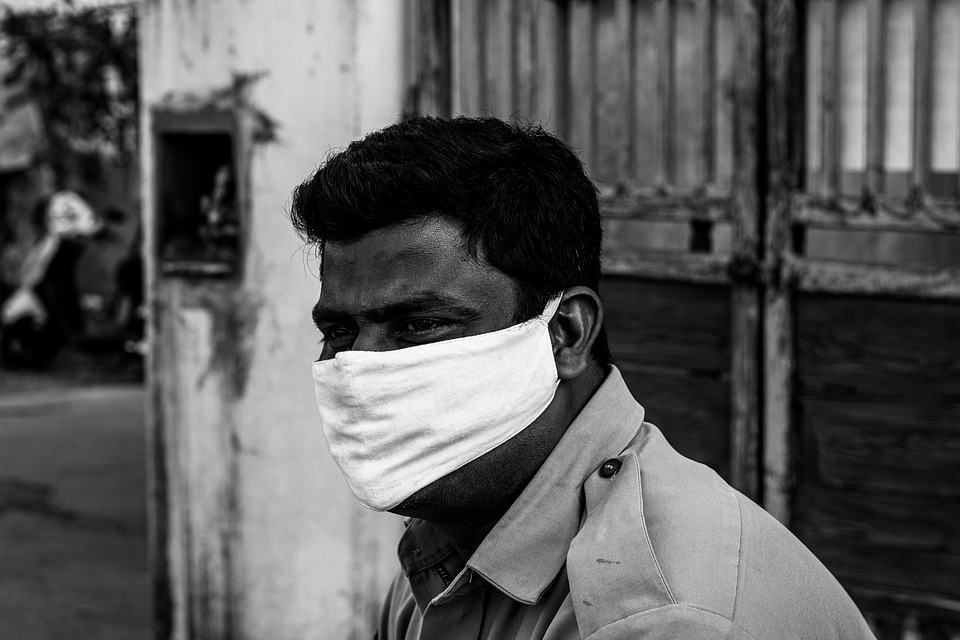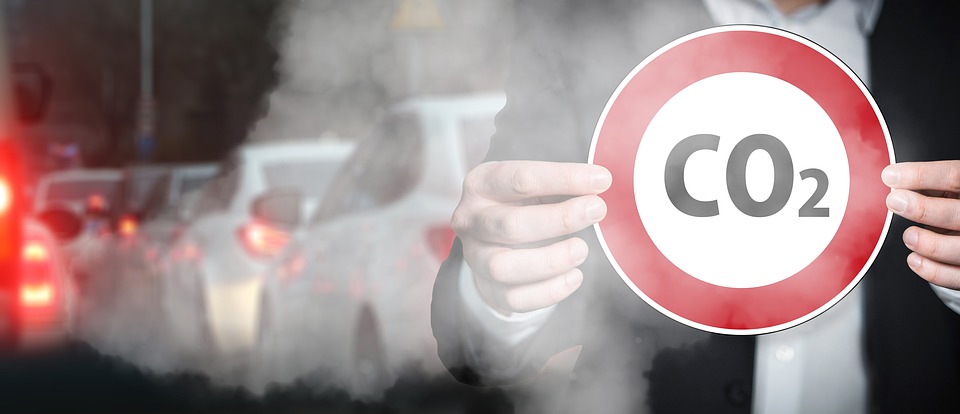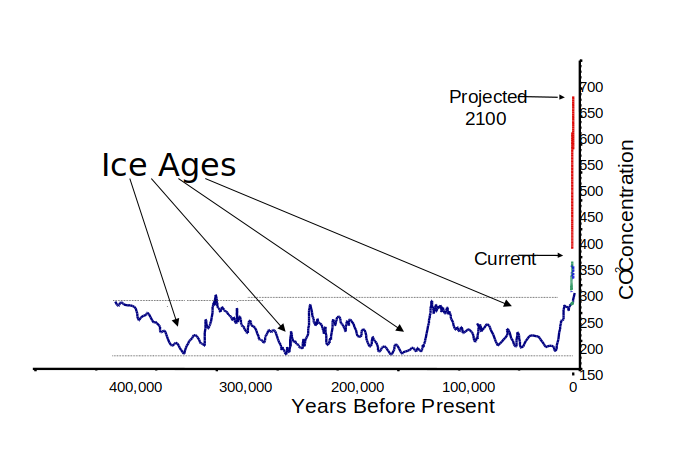Are you still a climate denier? Ten most important pieces of evidence that signal that our climate is indeed changing dramatically
How are we going to design and support policy priorities and make informed decisions to adopt a low-carbon lifestyle? We have to understand vulnerabilities and build resilience and prepare ourselves to adapt to a rapidly-changing world


Photo: Pixabay
There is no doubt that climate change is a reality. Yes or No? What are the evidences? What are we seeing already? How will the environment respond to climate change? Why are we constantly witnessing some extreme events like forest fires, cyclones, heatwaves, floods and emerging pandemics from zoonotic spillovers? Do we see any association between the rise in temperature and air pollution and people being admitted to hospitals?
Unpredictable and dramatic weather events even affect our mental health. There was one study that concluded that mental health declined and the number of suicides increased with drought severity. There is a strong connection between weather patterns and asthma occurrence. A lot of climatic and environmental factors influence the spread of viral diseases such as JE, enteric fever and Covid-19. Even food poisoning could be caused by microbes due to the dramatic weather situation.
There was one study done in Australia that observed a rise in monthly cases of Salmonella food-poisoning due to the sudden increase in daily temperature. In India, we have witnessed the rise in malaria, dengue and chikungunya episodes which are transmitted to humans by infected mosquitoes. A combination of waterlogging, increase in humidity and temperature can trigger spread of such vector-borne diseases in a short span of time. The World Health Organisation (WHO), in its report ‘Global Burden of Disease’, warned that the number of deaths due to climate extremes will rise substantially by 2030.

The world’s climate is an integrated system and it is not static. We have to visualise that we can’t be isolated in our city or house and we are connected to each and every component of the nature. Everything comes back in terms of ‘responses’ against what we do to our environment. There are so many factors (‘forcings’) that influence the atmosphere’s uptake and distribution of disturbances we create locally. They affect every one of us. We use energy (heat) from carbon sources and release it back into the atmosphere. The biggest sink of CO2 is oceans followed by forests. The energy-trapping gases (especially CO2, water vapour, CH4) absorb outgoing re-radiated infrared radiation. This raises Earth’s surface temperature.
There is no doubt that human activity is increasing the concentration of these greenhouse gases. CO2 concentration has increased from 275 ppm to 380 ppm over past century, and today the level is 416 ppm. Very soon, we are going to touch 450 ppm, which could cause a rise in earth’s temperature by 1.5 to 2 degrees celsius. The lockdown caused a decrease in carbon emissions from 15 to 17% globally within two months. But we know it was not due to structural changes in our system, but it was due to a sudden and abrupt stopping of our economic activities.

There is also one important aspect – that is of natural factors causing climate change. In all the discourses on climate change, the natural variability and other natural forcing functions such as volcanic eruptions are ignored. Everything that we are witnessing today has had happened historically too, without any human agents. For example, the sea level was 130 meter lower than today during the most recent ice age – about 20,000 years ago. Then, during early Holocene, sea level started rising – it rose by 60 meters between 12,000 and 7,000 years ago.
The level of CO2 in the atmosphere was ten times higher than today’s level during the Cambrian period 500 million years ago. Then it touched a record low of 180 ppm during the Quaternary glaciations. The earth was freezing that time, covered with ice and deep glaciations. However, the current level of CO2 is the highest in the past 14 million years. Much of this increase has been attributable to human activities, particularly burning of fossil fuels, forest fires and massive deforestation.

Let’s find out 10 most important evidences that signal that our climate is indeed changing dramatically.
1. Our earth’s average surface temperature has risen by 0.9 degrees Celsius since the late 19th century, which has been driven largely by increased emission of carbon dioxide and other man-made emissions into the atmosphere. But this is increase in ‘average’ temperature; there are instances of even bigger range of local temperature increases in Australia, Africa and Asia.
2. Most of the warming occurred in the past forty years, with the warmest years on recordtaking place since past decade, i.e. 2010 – 2020. The number of heat waves have increased with people dying from heat shocks in Australia and India. You have to imagine that the warming being witnessed today is happening more or less ten times faster than the average rate of warming during ice-age-recovery period. The number of record-high temperature events has been increasing, while the number of record-low temperature events has been decreasing since 1950. Most of the warming observed over the last fifty years is attributable to human activities.
3. The oceans have absorbed much of this increased heat. The top 700 meters (about 2,300 feet) of ocean is showing warming of more than 0.4 degrees Fahrenheitsince 1970.
4. The Greenland and Antarctic ice sheets have indeed decreased in mass. It is surprising to know that the rate of Antarctica ice mass loss has tripled in the last decade alone. The data from NASA’s Gravity Recovery and Climate Experiment (GRACE) show that Greenland lost an average of 286 billion tons of ice every year between 1993 and 2016. Even Antarctica lost about 127 billion tons of ice per year during the same time period.
5. Glaciers are retreatingalmost everywhere around the world — including in the Alps, Himalayas, Andes, Rockies, Alaska and Africa. There may be few years when the snowfall due to polar vortex and other weather events has increased, but overall, there is a trend of thinning of glaciers. Both the extent and thickness of Arctic sea ice has also declinedrapidly over the last several decades.
6. Satellite observations reveal that the amount of spring snow cover in the Northern Hemisphere has decreased over the past five decades and that the snow is melting earlier than the normal.
7. Global sea level rose about eight inches in the last century. The rate in the last two decades, however, is nearly double that of the last century and is accelerating slightly every year.
8. We are also witnessing increasing numbers of intense rainfall events and flash floods caused by the western disturbances starting January 2020. There are even large-scale changes in the onset of monsoon and break periods in India. The increase in high intensity storms with stronger winds and greater rainfall is largely attributable to change in sea surface temperature.
9. There is also an increasing trend of desertification and drought intensification. By 2030, the drought frequency over most of Australia may increases by up to 20%.
10. Since the beginning of the Industrial Revolution, the acidity of surface ocean waters has increased by about 30 percent. The amount of carbon dioxide absorbed by the upper layer of the oceans is increasing by about 2 billion tons per year.
We have all become ‘ecological debtors’ as our carbon footprints far exceeds nature’s biocapacity – and the irony is that we have limited biocapacity. For the year 2006, the world’s ecological footprint was 1.4 Earths. For concrete action and sustainable lifestyles, all of us — governments, industries and communities — need to take targeted steps to improve our system’s resilience and responsiveness.
The problem is that we are not doing enough. It is still a big question — how are we going to design and support policy priorities and make informed decisions to adopt a low-carbon life style? We have to understand vulnerabilities and build resilience and prepare ourselves to adapt to a rapidly-changing world. We hardly find any kind of dedicated system and manpower to respond to climate disasters.
There is a big gap between science and policy practice. Fundamentally speaking, we depend upon agriculture. And, in India, we rely largely on rain-fed agriculture for our food. We have to develop ecological ways of farming and say no to monoculture that depends upon pumping large amount of fertilizers and harmful pesticides into our soil.
It’s high-time that we stop talking and start acting. Because, the climate is changing, and it’s happening now. Let’s not be in a denial mode.
The author is a river and environmental scientist. Views expressed are personal.

